With a total area of approximately three-fourths of a square mile (about 500 acres for the farmers out there) and a population of just over 36,000 people (2023), Monaco is the second-smallest and the most densely populated country in the world. Only Vatican City is smaller—and it’s far less densely populated.
Fun fact: Monaco is tax-free because tourist money covers all government expenses.
There are four quarters in Monaco: (1) the town of Monaco, or “the Rock” headland that includes the old town; (2) the business district; (3) Fontvieille, the newer zone; and (4) Monte Carlo, the administrative area that includes the gambling casino. Monaco is such a small place, we were in all four quarters.
Monaco is governed by a constitutional monarchy and has been ruled by the House of Grimaldi since 1297. Its current head of state is Albert II, prince of Monaco, the only son of Prince Rainier III and Princess Grace Kelly. Because the head of state is a prince, the country is a principality, and not a kingdom. Monaco is a very expensive place to live. It’s common for property in Monte Carlo to rent at €72,000 per square meter ($7,250 per square foot), and some places cost as much as €90,000 per square meter ($97,500 per square foot),
We needed to take a tender from our ship to the dock in Monaco. This is how our approach to the dock looked. The building in the upper right is part of the old town atop “the Rock.” The red brick building on the left is part of Fontvieille, the new town.
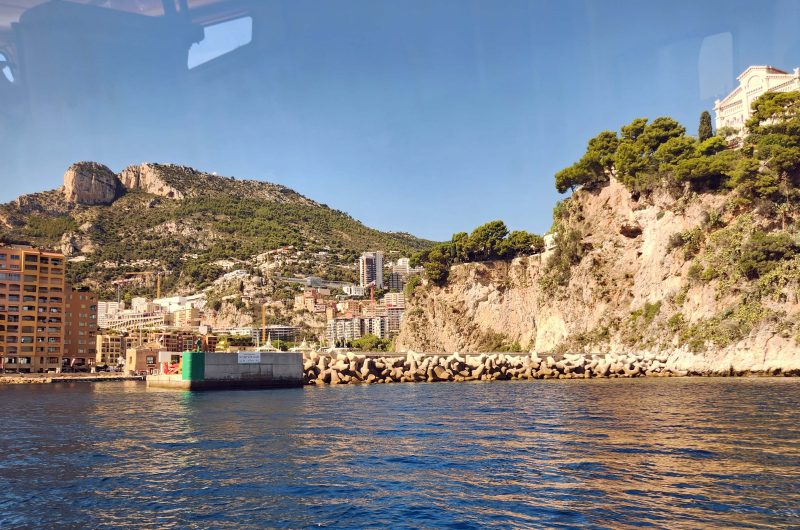
Here’s a view of the harbor from on land. You can see how “the Rock” juts out into the water. The white building on the Rock is the same one as the building on the right in the photo above. We went around the Rock to disembark from the tender.

All of Monaco can be seen from the top of the Rock, so we climbed to the top. There were some outdoor escalators at the very steep parts; the rest of the way we walked on a sidewalk like this.
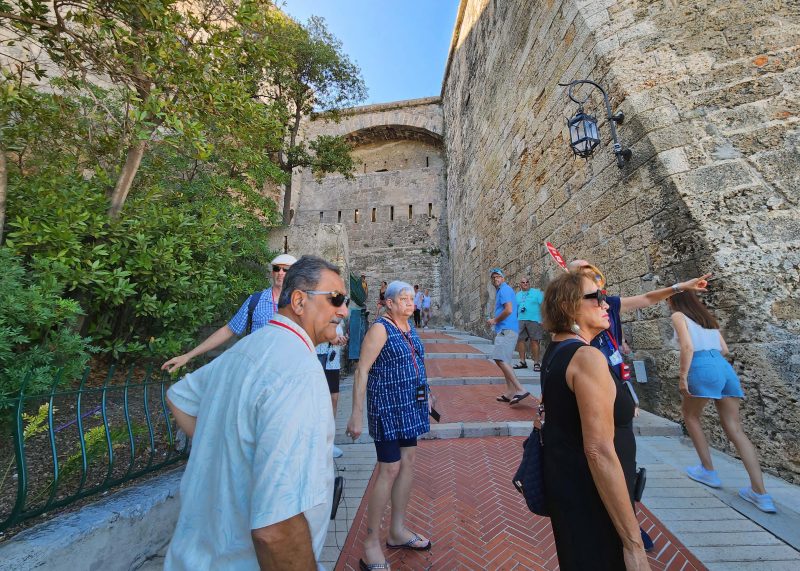
As we climbed higher, beautiful views appeared. This is another view of Fontvieilli from above. The harbor was filled in to provide a foundation for all these newer buildings.

The photo below shows Monte Carlo as seen in publicity shots. It’s beautiful in person! Crowded, but beautiful. In the right center of the photo, there is a white tower directly in front of a taller blue tower. Below that and slightly to the right, there are two relatively small green domes, about halfway between the tower and the water. (Zoom in on the photo if you can’t find them.) That’s the famous Monte Carlo casino. To give you an idea of the size of Monaco, the country’s border with France falls pretty much where the buildings end on the mountainsides.
The last week of May is the busiest time of the year in Monaco. It’s the week of the superyacht show and the Monaco Grand Prix race. During that week, it costs €150,000 ($163,000) to moor your superyacht in the harbor. The Grand Prix is run on the narrow city streets of this area in a loop from downtown, past the casino, and back—78 times. Our guide told us that, because of the crowds and the noise of the race, many residents leave the city during this week and rent their properties as Airbnbs. She also mentioned that it’s kind of “a thing” to park your superyacht here that week, just to show that you can afford to do so. I’m so glad I don’t have to deal with that kind of peer pressure.
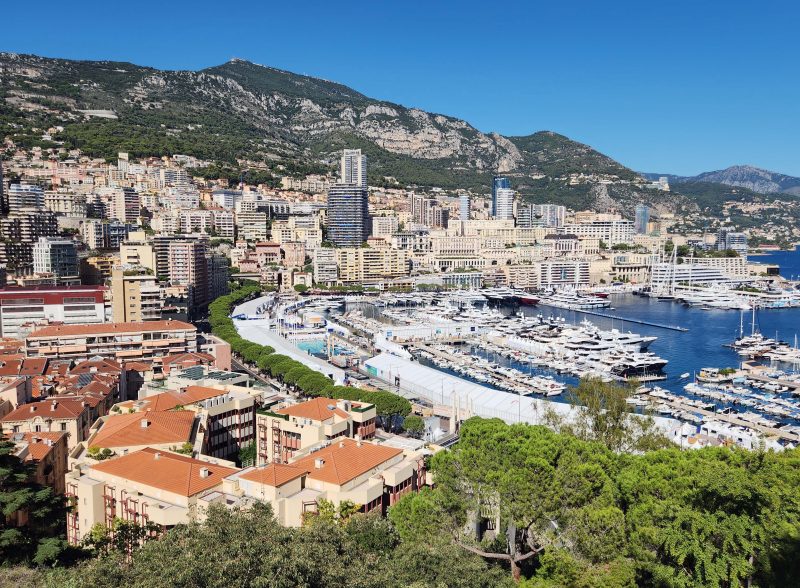
While we were walking around the city square, these classic Formula 1 cars drove by. On the back of the last car are the words “Try Me Now” in case you’ve been dreaming of driving a Formula 1 car.
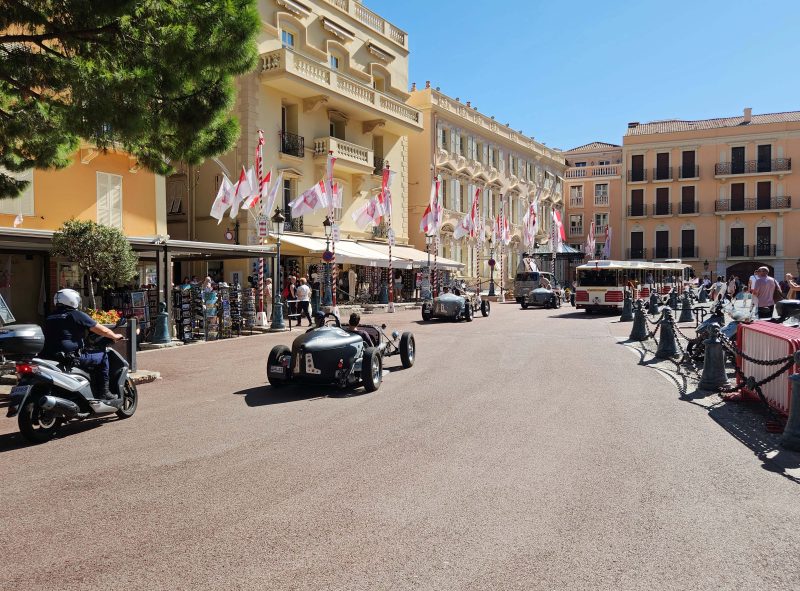
The city trolley also drove by while we were on the square.

This is the royal palace. The flag is flying atop the tower, so the royal family is in residence in Monaco, but not necessarily in the palace itself. According to our guide, the royal family is a part of the city and its members are well known to all. They walk and drive around the city just like regular folks.
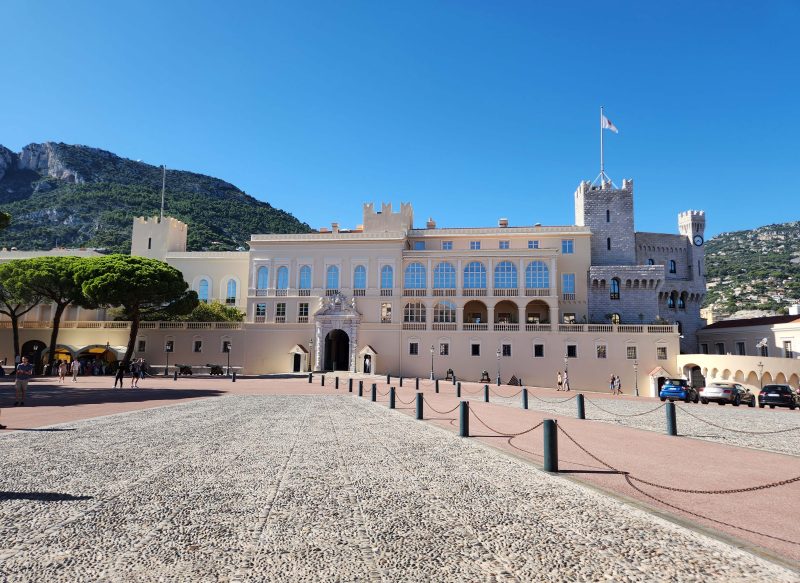
Monaco gained its independence in 1861 when the monks rose up and killed the country’s soldiers. In honor of that action, a monk with a knife is a city symbol.
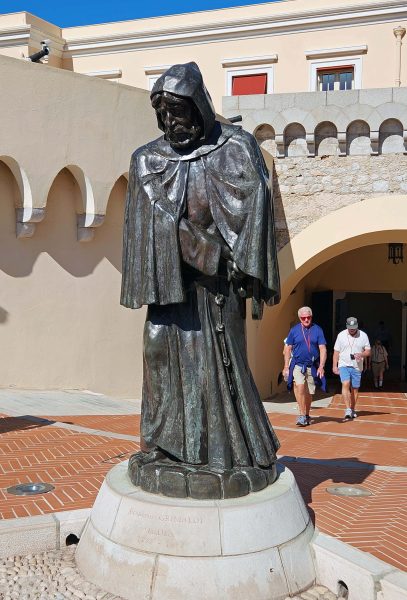
As we walked around the city, we saw the usual narrow streets and some nice homes.
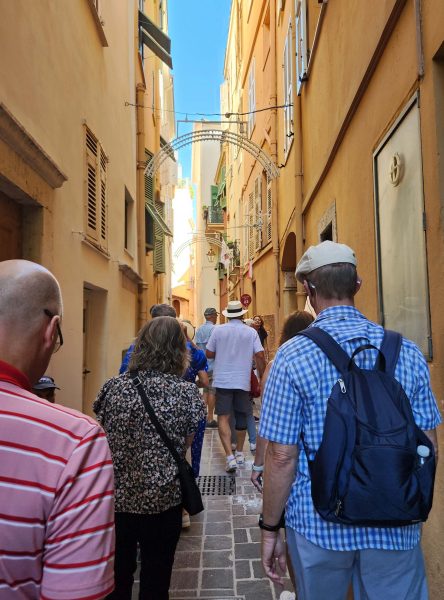
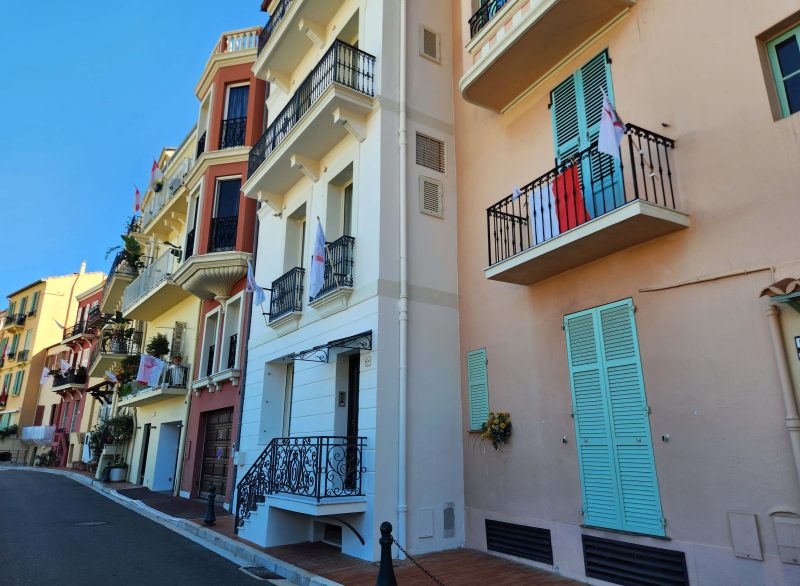
Prince Rainier III and Princess Grace were beloved by the people of Monaco. There are a number of statues and other things in remembrance of them around the city.
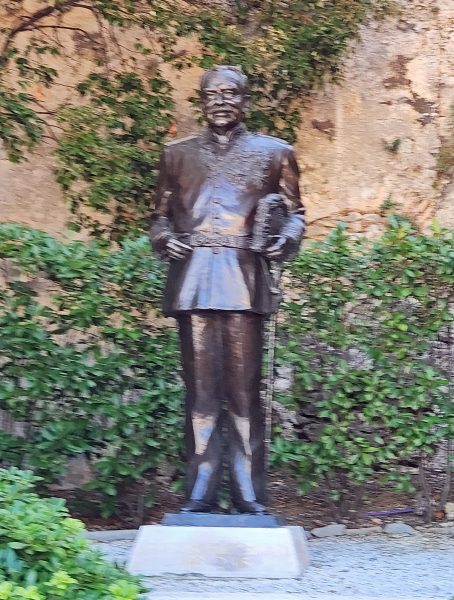
Prince Rainier III was born on May 31, 1923, and we were there while the country was celebrating the 100th anniversary of his birth. There were flags everywhere in the Prince’s honor.
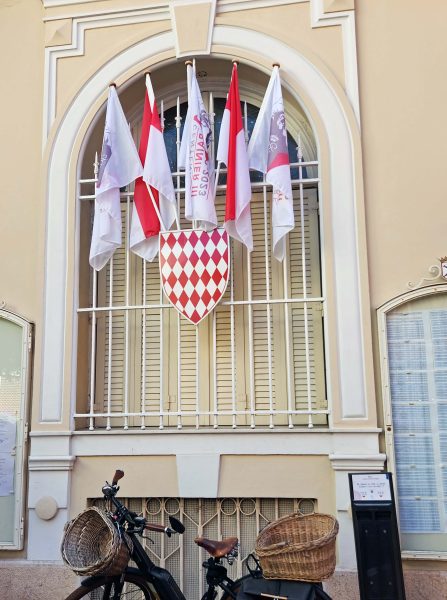
When Ted and I saw this hedge, we thought it might be something for us to consider doing when our boxwood hedge grows a bit thicker.
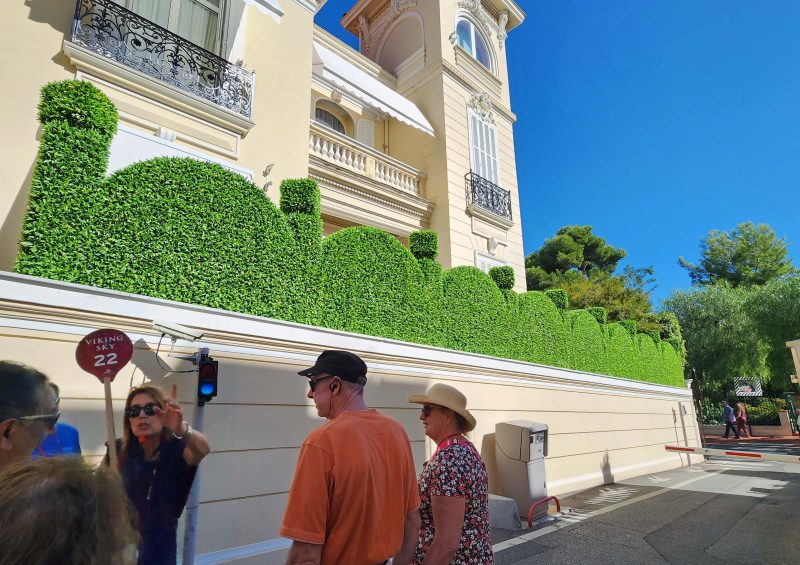
Monaco’s Oceanographic Museum was founded by Prince Albert I, a pioneer of oceanography. The Museum is renowned for its aquarium with its 90 pools that provide a home for more than 6,000 specimens and 350 species of fish. I don’t know what type of rock covers the exterior of the museum, but our guide told us it is self-cleaning when it rains. That sounds nice, but I couldn’t verify it, so it might be just a wishful thought.
Prince Rainier III was a lover of the sea and was concerned about protecting the environment, so he appointed Jacques Cousteau as the head of Monaco’s Oceanographic Museum in 1957. Cousteau led the institution for 30 years.
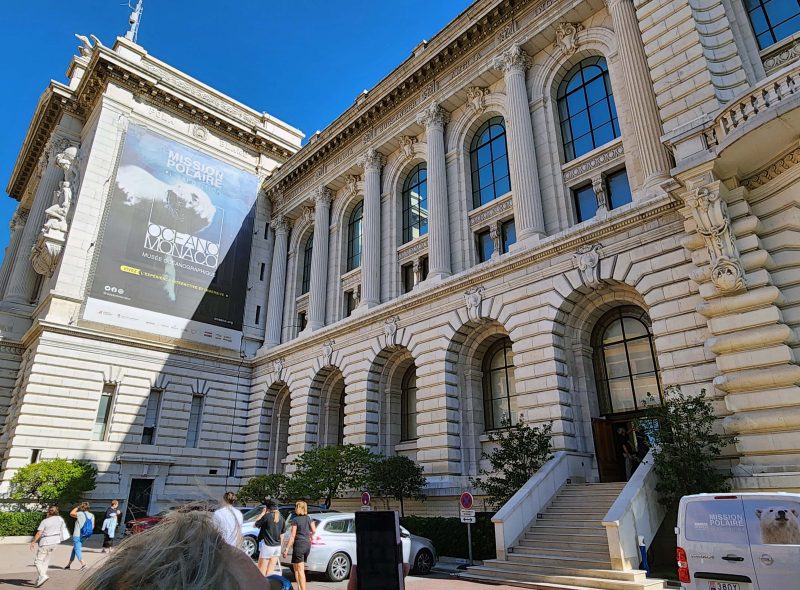
Here’s a close-up of part of the front of the museum. You can tell by the emptiness on the right, that we’re on top of the Rock here. The exterior of the building looks pretty clean, so maybe it rained recently.

Beside the museum is Monaco’s only national park. It’s not large. You can walk through it in 20 minutes—or sit on a bench and enjoy it for as long as you like.
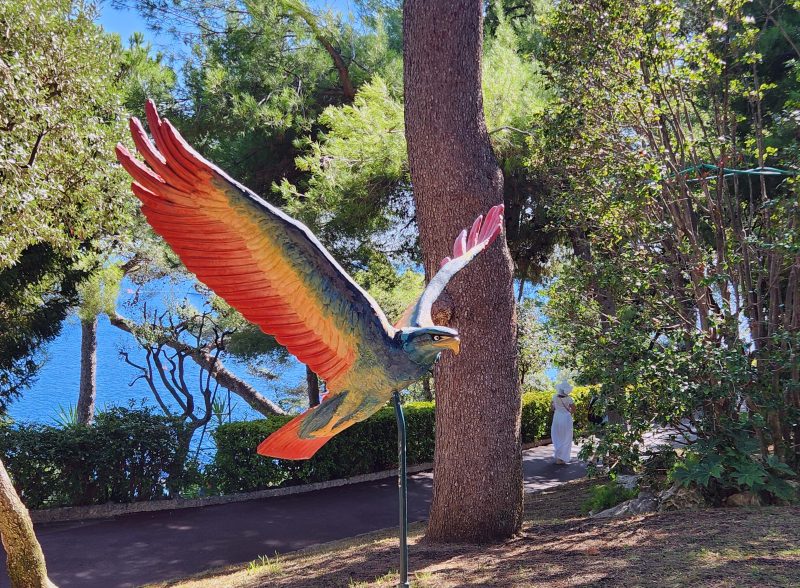
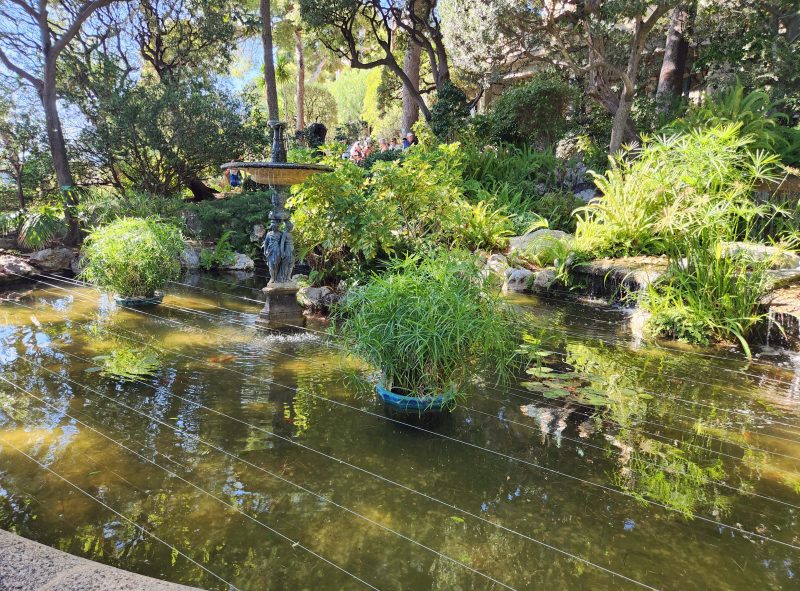
After the park, we walked to St. Nicholas Cathedral, the church where Prince Rainier and Princess Grace were married, attended services, and were buried.
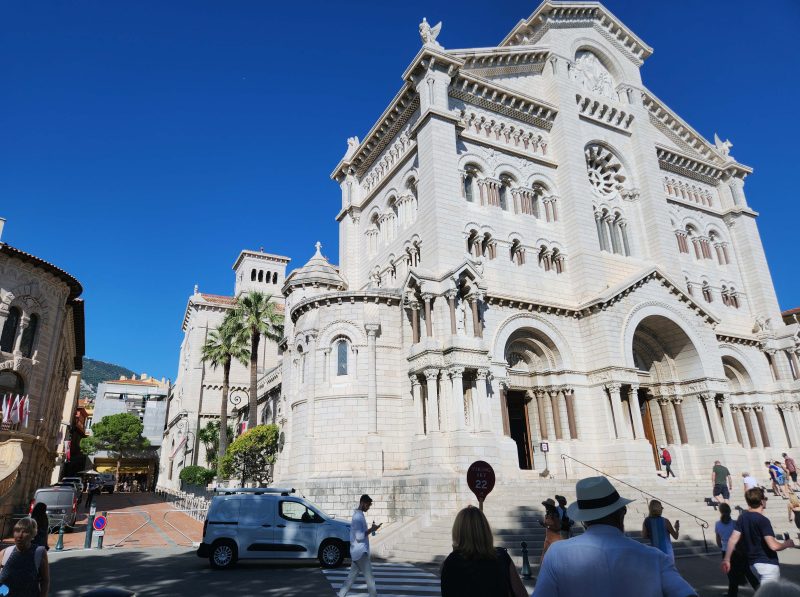
This is the nave of the church.
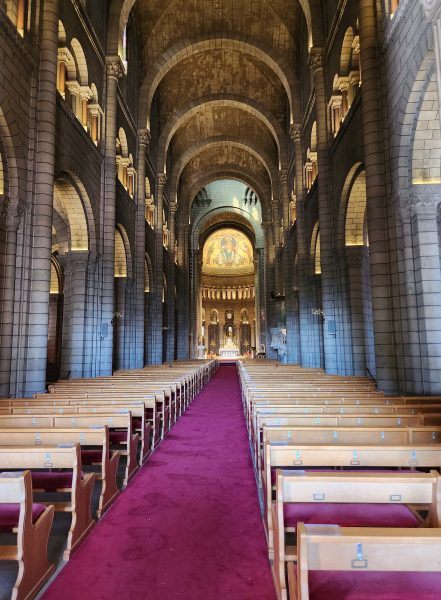
These chairs are in the front of the nave, close to the pulpit. They are where the royal family is seated for services. I guess it it’s pretty obvious if they skip church–or if they fall asleep during the sermon.
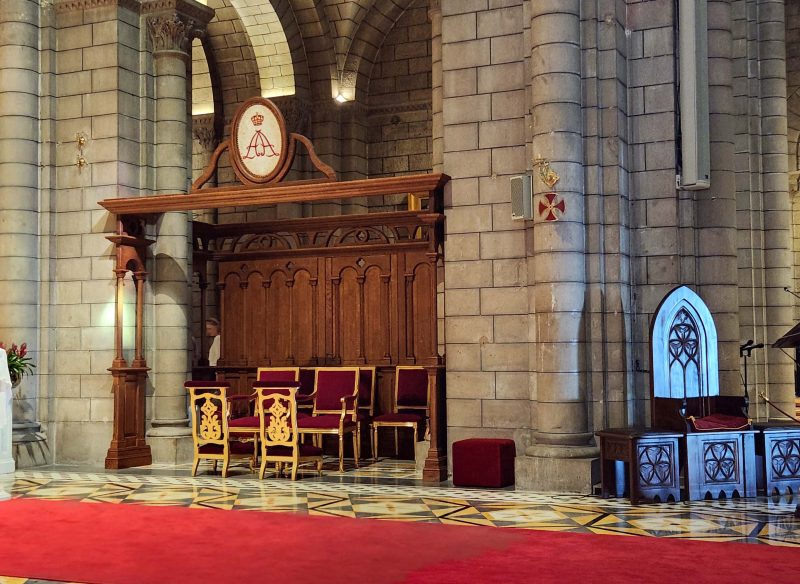
The tombs in the church include the relics of bishops and VIPs in the order of their deaths, so Princess Grace and Prince Rainier are the last two tombs. Two tombs are always left empty in case of an unexpected death. Most of the princely Grimaldi family is buried in this cathedral, from Jean II Grimaldi, who died in 1505; to Grace Kelly, who died in an automobile accident in 1982; and Rainier III, who passed away in 2005. You can see that people still put flowers on the Prince and Princess’s tombs.
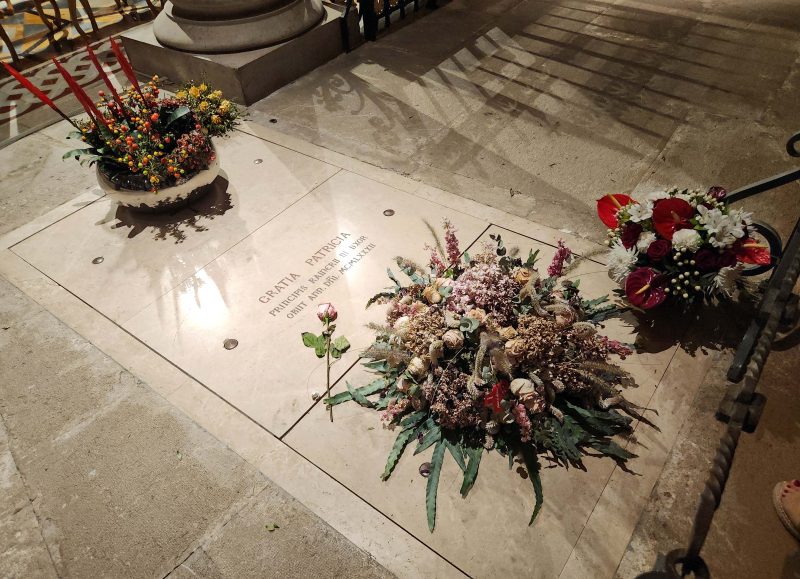
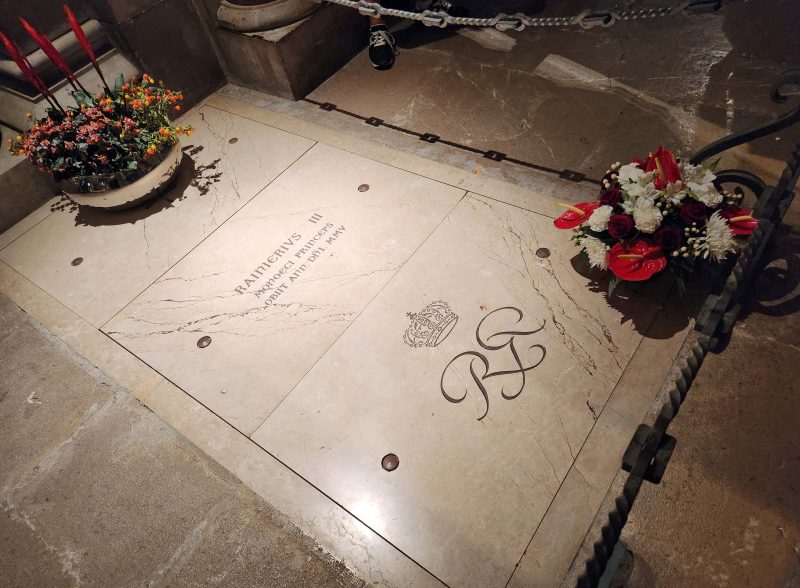
As Ted and I were walking around the city eating ice cream cones, I saw this parking sign. Isn’t it a great idea to inform drivers how many parking places are available so they don’t have to face repeated disappointments driving from lot to lot?
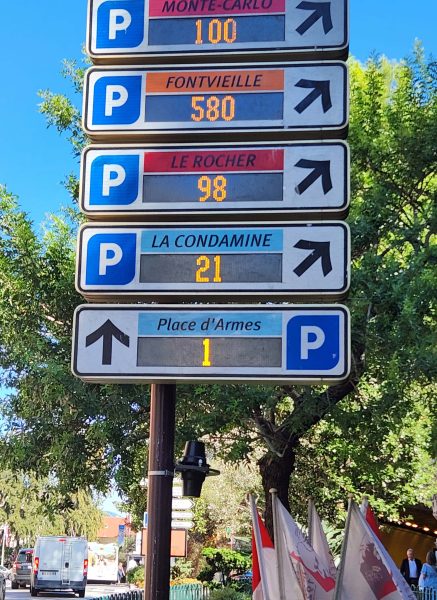
Monaco was a beautiful place to visit on a beautiful day. Ted and I have been lucky with weather on our 2023 BT. The only rain we had was in Athens, and it was dry during the hours we visited the Parthenon and the other buildings on the Acropolis. I guess we’re living right. I know for sure our life is good.